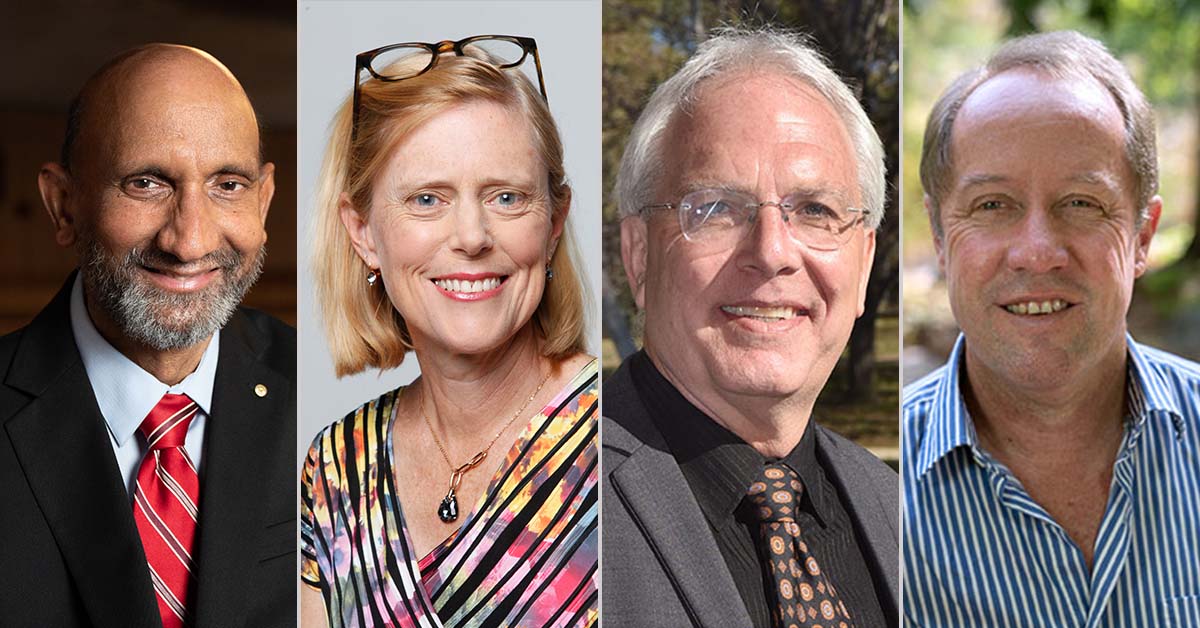
President of the Australian Academy of Science, Professor Chennupati Jagadish, is one of four Academy Fellows elected to the Royal Society, the United Kingdom's national academy of sciences. Internationally recognised for achievements in their fields, the Academy Fellows elected to the Royal Society are:
- Emeritus Professor Chennupati Jagadish AC PresAA FRS FREng FTSE from the Australian National University, elected for playing a pivotal role in shaping science policy in Australia, advancing the field both nationally and globally as President of the Australian Academy of Science, and for his pioneering contributions to semiconductor optoelectronics and nanotechnology.
- Professor Melissa Little AC FAA FAHMS FRS from the Novo Nordisk Foundation Centre for Stem Cell Medicine (reNEW) in Denmark and Australia's Murdoch Children's Research Institute, elected for her international leadership in developmental biology, stem cell science and nephrology, particularly her seminal research in renal regeneration.
- Professor Bill Laurance FAA FRS from James Cook University, elected for his pioneering research into the causes and consequences of human degradation of tropical forest ecosystems, in particular his work on the impacts of habitat fragmentation, logging, fires, infrastructure expansion, climate change and exotic pathogens.
- Professor Hugh Possingham FAA FRS from the University of Queensland, elected for his major contributions in mathematical and theoretical ecology and his work in applying ecological theory to formulate and solve some of the biggest problems in nature conservation.
Giants of science
Professor Jagadish said that following in the footsteps of giants of science like Isaac Newton, Charles Darwin, Albert Einstein, Ernst Rutherford, Stephen Hawking, Dorothy Hodgkin and Mark Oliphant "is truly humbling".
"This is a recognition for the work of many of my students, postdocs, academic colleagues, and national and international collaborators during the past 35 years.
"There is a long history of collaboration between the Academy and the Royal Society. It is a particular honour for me to have been elected a Fellow of the Royal Society while serving as the President of our Academy.
"My election is not only based on my contributions to science but also for my science leadership. This will allow me to further strengthen the historical relationship between our organisations and work together to champion the cause of science and serve the global community through science in these challenging times," Professor Jagadish said.
The best of scientific endeavour
Royal Society President, Professor Sir Adrian Smith, welcomed the latest cohort of outstanding researchers.
"Their achievements represent the very best of scientific endeavour, from basic discovery to research with real-world impact across health, technology and policy," Sir Adrian said.
"From tackling global health challenges to reimagining what AI can do for humanity, their work is a testament to the power of curiosity-driven research and innovation."
The Royal Society and the Australian Academy of Science share strong historical ties. In the early 1950s, a group of Australian-based Fellows of the Royal Society, including physicists Sir Mark Oliphant and Dr David Martyn, championed the establishment of a similar national organisation of scientists to support the growing capability of Australian science.
Since then, both organisations have continued to recognise scientific excellence nationally and around the world by electing distinguished researchers to their Fellowships.






